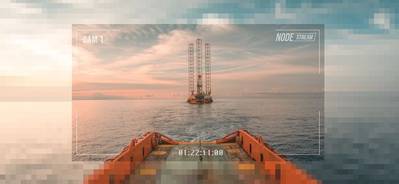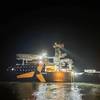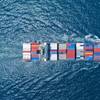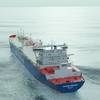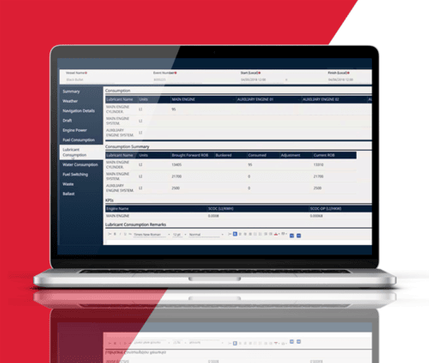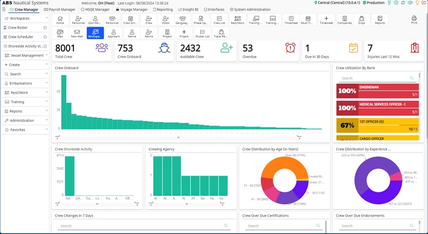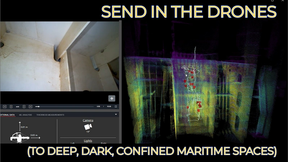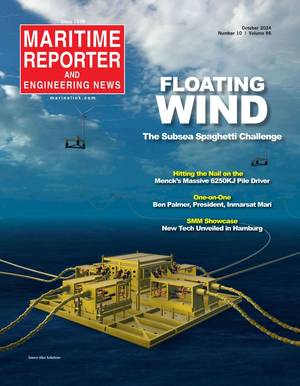Connecting the Dots: From Remote Operations to Full Autonomy
Realizing the full value of digital solutions far exceeds the capability of technology. The technology exists today to help offshore energy and maritime operators radically improve efficiency and cut costs in equal measure. The real trick to driving efficiencies is to take advantage of the latest technologies while at the same time negotiating the necessary culture change within individual organizations, to really reap the benefits.
Harvest Technology Group is a relatively young and small Australian company that has caught the attention of a number of offshore and subsea industry heavyweights, from Fugro to Ocean Infinity, Technip FMC and DOF Subsea. Damiain Brown, Chief Product Officer, and Adam Ford, Special Projects Lead, from Harvest discuss the potential of technology to make a real difference in the maritime industry with Offshore Engineer.
Working in the offshore environment is difficult enough, however poor connectivity can increase the difficulty exponentially. Getting access to increased bandwidth, if possible, comes with increased costs, but what about reliability? How do you make sure your system is dependable enough to allow the transfer of massive data packets or live stream video to solve a technical problem? Harvest Technology Group says it has the answer, or at least part of the answer, to achieving the true efficiencies and cost savings that come with seamless, fast, and reliable connections from shore to ship or offshore.
Founded just before the onset of the Covid-19 pandemic, Harvest has quickly grown its profile as a partner to help enable remote operations.
“Many of the Harvest team began their careers in the offshore and maritime sectors, and Harvest’s core technology was born from solving a specific set of problems to enable operational transformation within these sectors,” said Damiain Brown, Chief Product Officer. “In 2018, we set out with a mission to make remote operations possible, with a longer-term view of enabling the path towards robotics and autonomy.”
Today, by Brown’s estimation, Harvest supports the majority of tier-one service providers within the IMR space.
“We've recently joined Inmarsat Maritime's initiative as a certified application provider, so that's giving us access to a significant part of the global maritime and shipping sector,” he said.
 “In 2018, we set out with a mission to make remote operations possible, with a longer term view of enabling the path towards robotics and autonomy.” - Damiain Brown, Chief Product Officer, Harvest Technology Group (Image courtesy Harvest Technology Group Limited) Harvest has also expanded its partner network which now includes AST Group and Shamal Technologies in Saudi Arabia.
“In 2018, we set out with a mission to make remote operations possible, with a longer term view of enabling the path towards robotics and autonomy.” - Damiain Brown, Chief Product Officer, Harvest Technology Group (Image courtesy Harvest Technology Group Limited) Harvest has also expanded its partner network which now includes AST Group and Shamal Technologies in Saudi Arabia.
The company’s investment of about $5 million in R&D alone over the past 12 months is paying off with revenues up 42% year on year in 2023. Driving that growth are multiple markets, as maritime makes up 10% of its business (versus only 1% a year ago), with offshore services (36%) and energy (35%) delivering the bulk of its business today.
“Our focus on growing our business in the maritime sector is a key part of our strategic plan, which we're about halfway through implementing. The next phase will see us further diversify our target markets including defense and uncrewed assets across marine, land, and air,” said Brown.
Harvest’s key focus, regardless of the market, is on improving connectivity in remote environments; while also removing people from work in hazardous and remote locations, which of course includes inspections on offshore facilities.
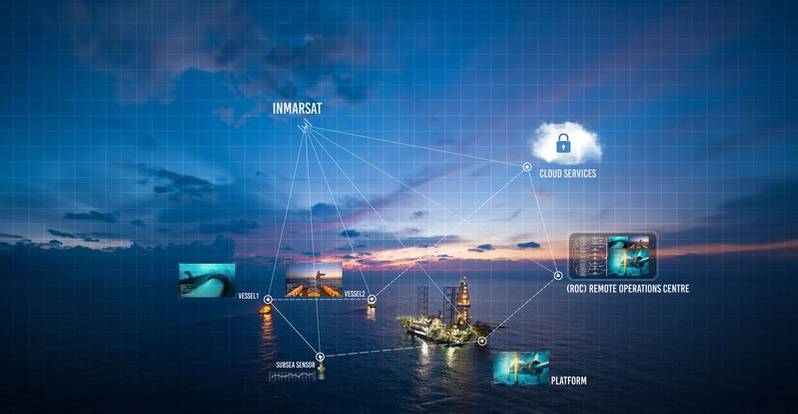 (Image courtesy Harvest Technology Group Limited)
(Image courtesy Harvest Technology Group Limited)
“Conventionally offshore inspection has been carried out locally on-site,” said Brown. “It’s usually a lengthy process which includes travel to and from offshore facilities, as well as a more laborious practice to acquire and transmit information.
“Harvest’s Nodestream technology allows more direct acquisition and recording of asset integrity-related data that can be delivered directly into a customer’s database,” said Brown. “It's a big shift in what's possible, and you get a lot of efficiency gains, you're able to work in a proactive manner.”
What is Nodestream?
Harvest’s proprietary Nodestream technology is a remote operations system for organizations, a fully secure integrated communications platform for real-time collaboration, communication and data sharing, accessible to everyone, anytime, anywhere. It is a proprietary transfer protocol tech that enables live streaming of video, audio, and data, using ultra-low latency and ultra-low bandwidth, and is capable of being integrated with a customer’s existing systems and network infrastructure.
“Ultimately, it's Harvest's proprietary protocol which differentiates us from others operating in this market,” said Adam Ford, Special Projects Lead. “Our typical offshore customer’s networks are dependent on satellite connections in remote locations where communications are rightly considered critical. However, due to physical, technical, and operational constraints, these networks are often plagued with errors such as high latency, jitter, packet loss, and often limited in bandwidth from the beginning.”
 “The first part of any remote operations journey is assessing the feasibility, from the client's perspective, of which roles could be relocated from the remote site, followed by defining what the objectives for the remote operations journey.” - Adam Ford, Special Projects Lead, Harvest Technology Group Limited (Image courtesy Harvest Technology Group Limited) Harvest’s technology is designed to be industry and network-agnostic, giving users the ability to tune settings and attributes on the fly to account for changing network conditions and, operational requirements such as prioritizing resolution and frame rate over latency.
“The first part of any remote operations journey is assessing the feasibility, from the client's perspective, of which roles could be relocated from the remote site, followed by defining what the objectives for the remote operations journey.” - Adam Ford, Special Projects Lead, Harvest Technology Group Limited (Image courtesy Harvest Technology Group Limited) Harvest’s technology is designed to be industry and network-agnostic, giving users the ability to tune settings and attributes on the fly to account for changing network conditions and, operational requirements such as prioritizing resolution and frame rate over latency.
Both Brown and Ford could not discuss Harvest’s ‘secret sauce’ –the proprietary transmission protocol that drives Nodestream and the reported efficiency gains – but Brown said the ‘recipe’ was completely homegrown.
“We've developed our technology solution 100% in-house to solve a very specific set of problems and basically enable transaction of video, audio, and data over networks where previously it would've been impossible.”
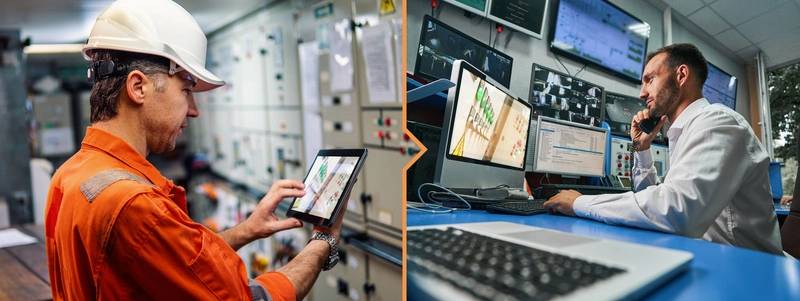 (Image courtesy Harvest Technology Group Limited)
(Image courtesy Harvest Technology Group Limited)
Servicing Customer Needs
Harvest has a long list of customers in the offshore and subsea spaces including Ocean Infinity, TechnipFMC, and DOF Subsea. One of their major customers is Dutch offshore survey firm Fugro which recently selected the hybrid Nodestream/RiS™ Solution after an operational trial on a USV project for Woodside.
“We had two different technology offerings: a remote monitoring and remote situational awareness, a cost-effective solution, and our premium offering called RiS – or the Remote Inspection System – that allows users the ability to furnish their client deliverables,” Brown explained.
“RIS is at a slightly different cost point. As a user, you might not need all the bells and whistles when you are transiting from location A to location B, but then once you get there you want to start a different mode of operation.
“In the last year Harvest has seen a growing customer desire for greater flexibility; to be able to utilize both technologies to support different operational modes, and so the team at Harvest hybridized the two technologies into one offering, enabling users to switch between modes as operations dictate.
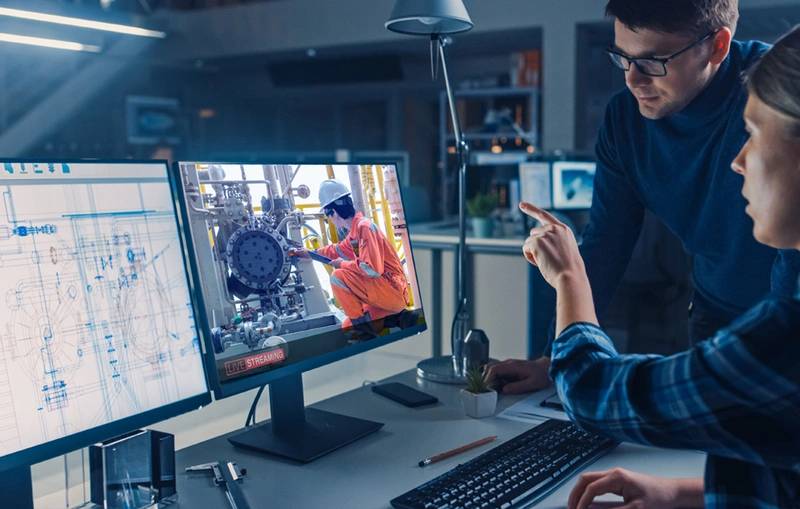 (Image courtesy Harvest Technology Group Limited)
(Image courtesy Harvest Technology Group Limited) 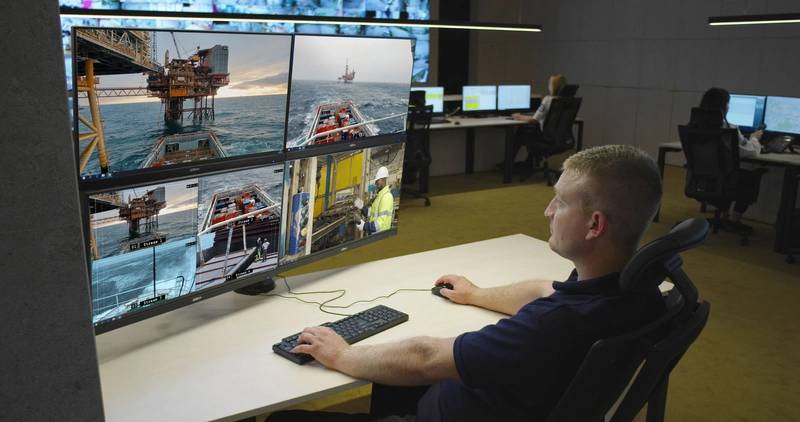 (Image courtesy Harvest Technology Group Limited)
(Image courtesy Harvest Technology Group Limited)
The Remote Inspection System (RiS)
While it’s difficult to quantify the pace of the transition to remote inspection technologies due to the reluctance of operators to discuss the topic in much detail, the direction is clear: operators are taking people off of rigs and offshore infrastructure and moving to remote options to reduce costs, save time, and minimize safety concerns.
To enable this transition Harvest has developed the Remote Inspection System (RiS), a system designed to optimize existing networks to reduce bandwidth utilization by up to 80%, enabling crew members to transmit 60fps HD video, hi-res images, and data in real-time from remote operations anywhere in the world on any connection.
Ford puts into perspective the service and its application in the offshore environment.
“The first part of any customer’s remote operations journey is defining the strategic and operational objectives for the journey then determining which roles can be relocated from the remote site,” Ford said.
“Our experience tells us that generally it’s inspection personnel that get selected as their role mostly requires them to look at a monitor onboard a vessel using their skills to identify and report on the assets,” Ford said. “So, we asked ourselves the question, ‘If we could reliably stream the content that inspection personnel look at offshore, could we enable them to complete the same task onshore?’” Ford explained. “This exposed a number of extremely complex problems given that satellite connections can be intermittent and unreliable with limited bandwidth capacity.”
Ford explained that Harvest’s RiS was developed to enable the transmission of quality video and the associated metadata along with clear and reliable audio system over these satellite links or networks, meaning operators could transform how they worked without needing to change the infrastructure they worked with.
“The solution itself is unique; it's intuitive, it's functional, but most of all, it's reliable and the only system we know of specifically designed to solve the technical problems of remote inspection. Plus, it's optimized to run on the most limited networks in any remote location on the planet,” Ford said.
“Another key element is, without question, security,” Ford added. “We have to be able to do it securely; we know with certainty that our data paths cannot be intercepted or interfered with; so someone can't take control or give wrong information. Security is paramount.”
 (Image courtesy Harvest Technology Group Limited)
(Image courtesy Harvest Technology Group Limited)
Tech vs. Culture
As technology advances at speed across industries in relation to digitalization, data, autonomy, and energy transition, it’s clear that it’s not just technology maturity that impacts the ability of organizations to truly transform their operations, to make them more efficient, safe, and cost-effective. There remain various hurdles, perhaps none higher than company habit and culture.
“This is a really important question and I think by far the biggest hurdle for companies transitioning to remote operations or implementing this type of technology is change management,” said Brown. “It is really a different way of doing things and bringing your staff and your team along for the journey, communicating why it's being done and what the benefits are is essential. So, by far and above, the biggest one is change management,” Brown noted.
Change management aside, Brown and Ford see boundless opportunity for all in this space. “The whole industry, in one form or another, is transitioning towards remote, robotics and autonomy. If there's a means to do something in a more environmentally efficient manner, a more cost-effective manner, and a safer manner, why would we not adopt it?”, Brown said.
Sign up for the Harvest Technology Group Webinar
Title: Challenges & Opportunities of Remote Operations
When: October 17, 2023
Why: Damiain Brown and Adam Ford take a deeper dive into how offshore, subsea, and maritime companies can tangibly increase productivity and cut costs by leveraging existing technology.
Harvest Technology Group at a Glance
HQ: Perth, Australia
President/CEO: Paul Guilfoyle
Number of employees: 43
Website: https://harvest.technology/
Key Technology: Harvest’s proprietary Nodestream technology is pivotal to businesses looking to digitalization as a way to increase productivity and decrease costs. Nodestream is a proprietary transfer protocol technology that enables live streaming of video, audio and data, using ultra-low latency and ultra-low bandwidth, and capable of being integrated with a customer’s existing systems and network infrastructure, enabling fully secure integrated communications for real-time collaboration, communication and data sharing - all in one place, accessible to everyone: anytime, anywhere.




